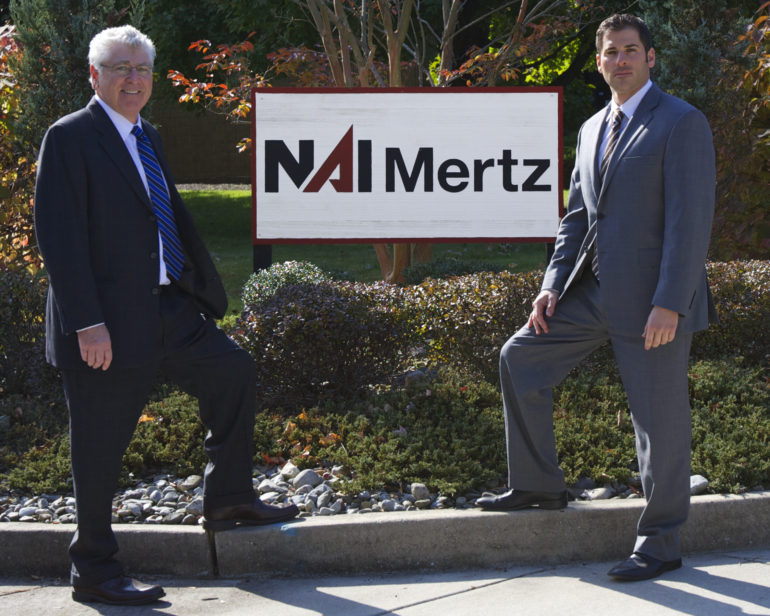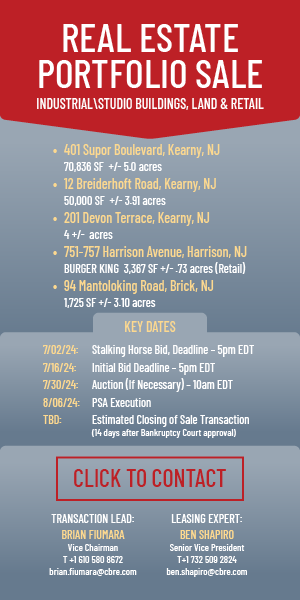Barry Mertz (left), CEO and founder of NAI Mertz, and his son, Scott Mertz, president, lead the Mount Laurel-based commercial real estate brokerage. The firm marked its 35th anniversary last fall. — Courtesy: NAI Mertz/Billy Neuman
By Joshua Burd
NAI Mertz might be the largest independent commercial real estate brokerage in southern New Jersey, but Barry Mertz will never forget the company’s humble beginnings.
After all, working with his wife Faye is a daily reminder of how it all started.
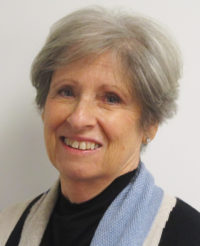
“Faye has been our CFO right from the beginning. We actually didn’t have the resources to hire someone in that capacity,” said Mertz, CEO of the Mount Laurel-based firm. “She took over and, to this day, she still has that responsibility, so kudos to Faye — she’s been along for the ride.”
It’s one reason he can still call NAI Mertz “a real mom-and-pop operation,” despite the firm’s growth over more than 35 years. In 2016, the business completed some 300 lease and sale transactions in the region, comprising about 6 million square feet and $220 million in total volume.
Through it all, Mertz has maintained a nimble, adaptable philosophy that has allowed it to sustain its business amid the highs and lows of commercial real estate. And as it navigates an industry that continues to change as much as ever before — both in New Jersey and nationally — staying nimble will be all the more important.
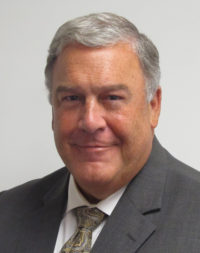
“I’ve worked for some of the larger companies … and I would say the culture here is very different,” said Dave Grove, the firm’s chief operating officer. “It’s great for the people that want to be a little bit more entrepreneurial in their pursuits and have a little more latitude in the types of business they produce. We don’t pigeonhole people.”
Not to mention that NAI Mertz is a second-generation business. Scott Mertz, the son of Barry and Faye, has risen to the role of president since joining the firm in 2001, all while winning national acclaim as an industrial broker. In 2014, he was recognized as NAI Global’s top producer worldwide for handling the highest volume within the NAI network of 6,700 professionals, while finishing in second in 2015.
It’s no surprise that the firm, which now has 33 brokers and employees, has its roots in the warehouse and distribution sector, despite having made its mark more recently in the office and retail markets.
The elder Mertz started his own real estate career working for developers such as Hart Corp. and Trammel Crow Co. When he launched Mertz Corp. in 1981, he began with property management and leasing assignments for JPMorgan and several other institutional warehouse owners, with locations in Mount Laurel, Cherry Hill and Pennsauken, along with Bensalem, Pennsylvania, and Newark, Delaware.
But as the region’s ownership profile changed, Mertz needed to adapt.
“We were fortunate that we handled those properties for 15 to 20 years, so we had a long run … and, in most cases, we were able to represent the owner and sell the properties,” he said. “Unfortunately, many of the buyers of the properties did not need property managers. Some of them were (real estate investment trusts) that did their own property management, others were major developers that did their own property management.”
When the firm’s property management portfolio fell to about a half million square feet around the late 1990s, “it really wasn’t economical for us to keep the property management side going,” he said, causing NAI Mertz to shift its focus to other service lines.
That shift has been driven by key hires and the opening of satellite offices around suburban Philadelphia. For instance, its push into the office sector was bolstered in the mid-1990s with the hiring of Rebecca Ting, an industry veteran and recent state chapter president of the Society of Industrial and Office Brokers.
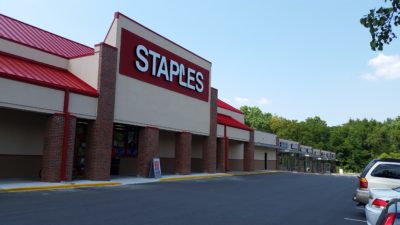
Meantime, the firm expanded into retail in earnest in 1998 with the hiring of Marc Cutler, who helped build a platform alongside other key executives who joined Mertz in the ensuing years.
Company executives also note the importance of joining the NAI Global network barely two years into the existence of Mertz Corp. That makes it one of the most senior among the roughly 185 organizations that make up the 39-year-old network, and Mertz has seen the benefits of being able to both send business outside the region and meet a fellow member’s needs in South Jersey.
Mertz executives have played key roles in NAI Global leadership groups, and the firm consistently ranks in the Top 10 for exporting business to other regions, it said. In 2016, for instance, NAI Mertz ranked eighth among all member firms.
“In most cases, we also know the salesperson at the firm that will be handling the assignment, and we’re confident that they will do a good job for our client, because if they don’t, it will certainly be a bad reflection on us,” Mertz said. “That’s never really been an issue. In fact, it even enhances the relationship we have with our clients that they feel comfortable working with us to do a transaction in another market.”
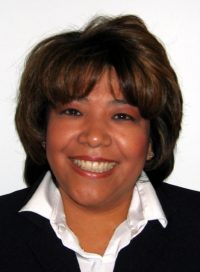
Aside from lasting through several cycles, NAI Mertz is now adapting to a changing commercial real estate landscape. Ting, who joined the firm some 22 years ago, said the South Jersey market has been through “a complete evolution” when it comes to being a broker, how space is used and who owns the property.
She and Mertz pointed to prominent examples in Cherry Hill such as the 150,000-square-foot former Syms Clothing store on Route 70, which a developer is repurposing into a facility for the Penn Medicine division of the University of Pennsylvania Health System.
“Here was a retail facility that was repurposed into a Class A office medical facility,” Mertz said.
They also cited the former Riverview Corporate Center about six miles to the east, a former Lockheed Martin complex that is now slated to become a facility for Cooper University Health Care. Heath care users, along with financial services and a handful of other sectors, are now driving the office market south of Trenton, they said.
Besides a change in user types, Mertz has seen broad shifts in ownership over the years. Executives with the firm point to the rise of the suburbs about three decades ago, when private developers helped build up the office market in the likes of Marlton, Cherry Hill and Mount Laurel, followed by the entrance of institutional owners who were drawn to the asset class.
“But now that it isn’t the favored institutional product type, a lot of the institutions have jumped out,” Ting said, referring to suburban office space. “And we’ve seen a big diversification in ownership now, where you used to have four or five major owners. Now we’re seeing (a wider array of) ownerships taking over from private equity.”
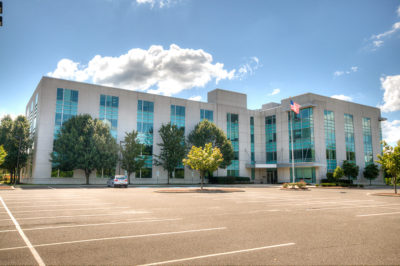
Those new owners are sprucing up the properties for companies that want to attract young talent from urban centers, she said, creating workspaces with amenities such as game rooms, lounges and modern food services.
When it comes to where it all started for Mertz, the industrial sector is changing as much as any other. He noted that, when he broke into the business, 80,000 square feet to 100,000 square feet qualified as a “large” warehouse facility. Today, buildings routinely surpass the 500,000-square-foot mark.
Scott Mertz and the firm’s industrial team are on the front lines as big-box developers continue to creep southward on the New Jersey Turnpike. With a scarcity of sites in northern and central New Jersey, large industrial complexes are sprouting up in Burlington and Gloucester counties, as developers target logistics and e-commerce tenants seeking regional distribution hubs.
“(It has) really helped the local guys down here,” Scott Mertz said. “A lot of the larger developers from up in North Jersey and around the country are starting to take notice of South Jersey. And the prices in South Jersey on industrial land have doubled or tripled in some areas.”
In late 2014, Scott Mertz represented the seller in the sale of a 51-acre parcel on West Cedar Lane in Florence to Liberty Property Trust, which has developed a 614,000-square-foot fulfillment center for Amazon. He followed that by selling a 33-acre tract across the street to First Industrial, which has since completed a 577,200-square-foot facility at the site.
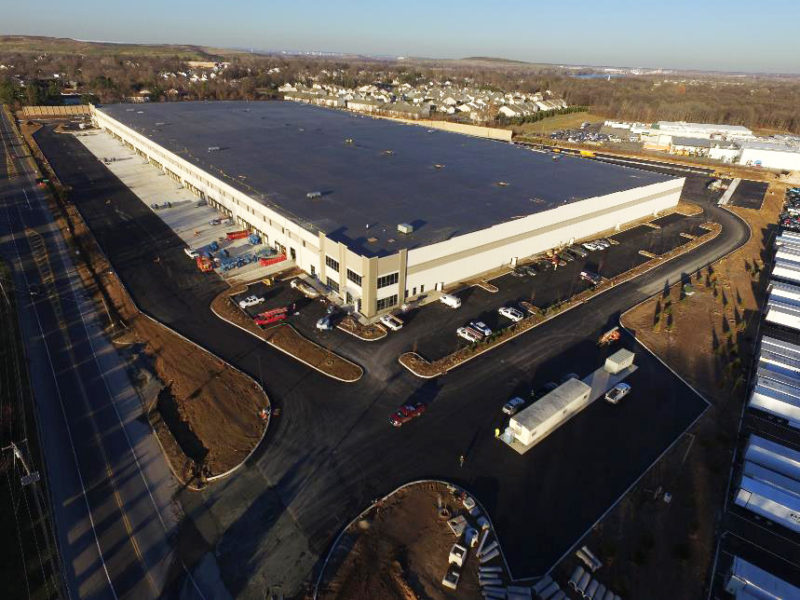
The younger Mertz, who now has more than 15 years in the business, said growing up and hearing “real estate talk” at the dinner table was a driving force in his decision to enter the profession.
“I think that’s really what drew me to it,” he said. “It was an opportunity to get my foot in at an early age — and, I think, to be taught by someone who has been in the business for many, many years and understands all facets of it.”
As one would expect, Barry and Faye Mertz have nothing but pride. The former jokes that, when he goes to NAI Global meetings, he’s now known as “Scott’s dad.”
Grove, who volunteered his opinion as a nonrelative, said “Scott’s contribution raises the visibility of the company regionally.” That’s critical as the firm continues its growth around the greater Philadelphia area, which is a key part of its strategy going forward.
NAI Mertz is now exploring the prospect of expanding into the retail sector in downtown Philadelphia, among other growth areas. Grove added that the firm would “like to see a more diverse income stream in addition to just growth for growth’s sake,” noting that “some of it will be market-driven and some of it will be strategic.”
The brokerage is even weighing the idea of getting back into property management, a nod to the diversification of ownership in the region and the fact that REITs are either exiting the market or outsourcing that side of the business.
“And we listen to our clients,” Grove said. “And there are more clients asking us to do both listing and management.
“We’ve taken on a couple of major listings recently where they’ve asked us to do that. We can do that through our sister firms in NAI, but there are some indicators there that it may be an opportune time to get back into it.”
Digital savvy
As a veteran commercial real estate broker, Ting knows how far the industry has come from signage and “hard marketing materials” such as brochures and pamphlets. The wide availability of information and online databases has changed the game and the role of the broker, she said, a far cry from when “you could pull out your Rolodex” and connect a tenant to a developer.
It’s why she can appreciate working for a firm such as NAI Mertz, which has embraced the role of online marketing and social media in its platform.
“That’s been one of the nice things of working here, that Barry and Faye have invested a lot of money not only in hiring brokers, but in the infrastructure that supports us,” she said, such as marketing and social media. “You have to be out there and you have to be visible.”
Led by Marketing Director Patrick Sweeney, the firm has built its online presence since 2011 with blogs and platforms such as Twitter, Facebook and LinkedIn. He said NAI Mertz has grown organically, rather than buy followers, allowing it to establish its feeds “as a source for market information and building relationships with investors/developers, other brokerage firms and media outlets.”
The business has been most successful on Twitter, where it now has 1,085 followers and about 70,000 tweet impressions monthly.
Great Job by the NAI Mertz office team of Rebecca Ting & Julie Kronfeld! Another office building fully leased! #CRE https://t.co/x3Gbcl6DlB
— NAI Mertz (@NAIMertz) March 16, 2017
Faye Mertz, who handled the marketing for most of the firm’s early years, said one key to raising its profile online has been getting buy-in from everyone at NAI Mertz.
“That’s what we’ve always tried to do — have people here working as a team,” she said. “That’s always been our philosophy. Anyone that we hire, when we talk about fitting in, it’s really to be part of our team.”

